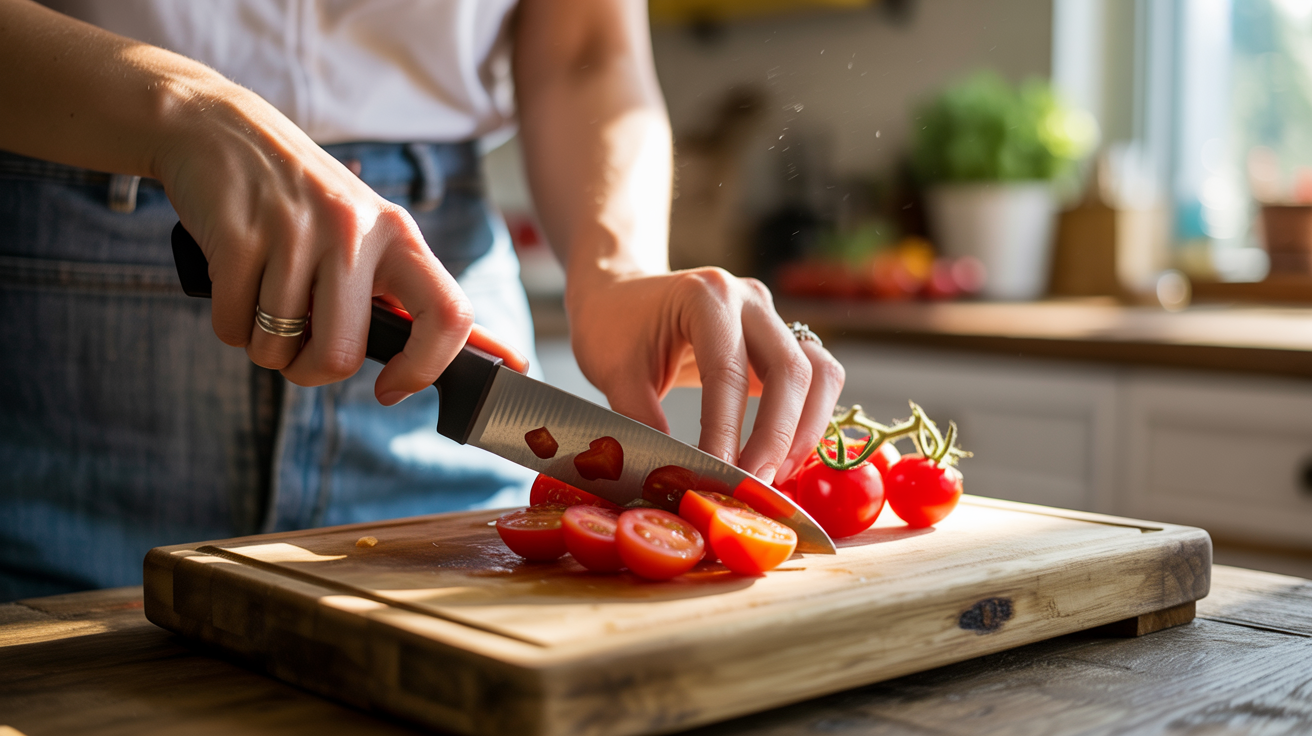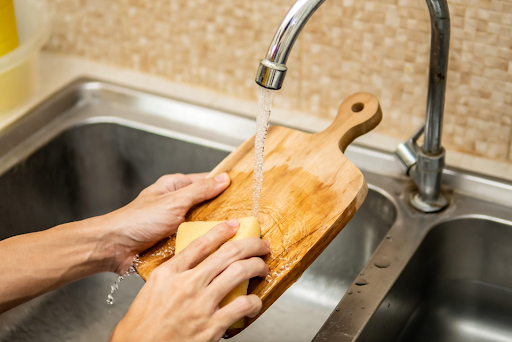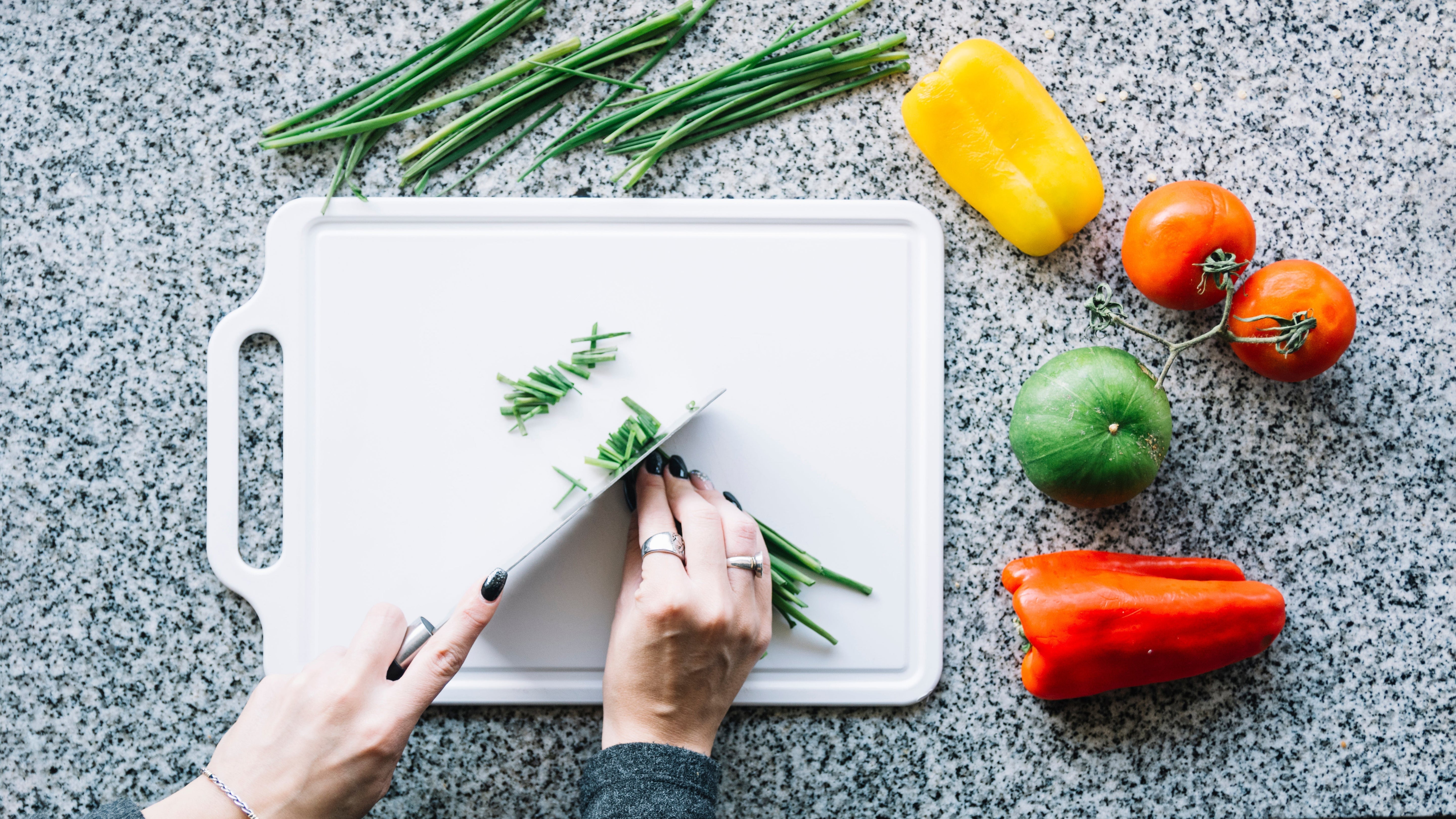
The Best Cutting Boards for a Healthier, More Beautiful Kitchen
Key Takeaways
- The right cutting board affects more than just meal prep, it impacts health, hygiene, sustainability, and kitchen aesthetics.
- Wooden cutting boards, especially those made from walnut, maple, or cherry, offer the safest, most durable, and most beautiful option for modern kitchens.
- Choose boards with non-toxic finishes, natural hardwood construction, and a style that fits your space and cooking habits.
-
With proper care, a high-quality board is not just a tool, it’s a design element, a health-conscious choice, and a long-term investment.
Introduction: Why Your Cutting Board Matters
A cutting board is one of the most used tools in any kitchen, but it’s also one of the most overlooked. Many of us give more thought to our cookware or cutlery, ignoring the surface we use every day to chop, slice, and serve. But choosing the best cutting board can make a surprising difference, not just in how your kitchen looks, but how it functions and supports your well-being.
From safety and sustainability to knife care and aesthetics, the cutting board you use reflects your approach to cooking, health, and even home design. And when you find the right one? It becomes a seamless part of your routine, and your space.
What Kind of Cutting Board Is Best? Key Factors to Consider
Before diving into specific materials and styles, let’s break down what truly defines the best cutting board:
✔️ Material
Hardwood boards (like walnut, maple, and cherry) are durable, naturally antimicrobial, and gentle on your knives. Avoid glass and low-grade plastic.
✔️ Maintenance
Wood requires a bit more care, handwashing and occasional oiling, but it rewards you with long-term durability and beauty.
✔️ Knife-Friendliness
A good board should preserve your knife edges. Hardwoods absorb blade pressure without dulling your knives, unlike glass or bamboo.
✔️ Safety & Hygiene
The safest cutting board material is one that resists bacteria without absorbing moisture, hardwoods excel at this when properly maintained.
✔️ Sustainability
Quality wooden boards are renewable, long-lasting, and crafted from responsibly sourced materials, making them an eco-friendly choice.
✔️ Design
A beautiful walnut cutting board or maple cutting board doubles as kitchen décor. Whether minimal or rustic, the grain and finish add texture and warmth to your countertops.
Safest Cutting Board Materials: A Comparison
Let’s compare the most common options available—and why wood still comes out on top:
|
Material |
Safety |
Knife-Friendly |
Maintenance |
Look & Feel |
Sustainability |
|
Wood |
⭐⭐⭐⭐⭐ |
⭐⭐⭐⭐⭐ |
⭐⭐⭐⭐ |
⭐⭐⭐⭐⭐ |
⭐⭐⭐⭐⭐ |
|
Bamboo |
⭐⭐⭐ |
⭐⭐ |
⭐⭐⭐ |
⭐⭐⭐ |
⭐⭐⭐⭐ |
|
Plastic |
⭐⭐ |
⭐⭐⭐ |
⭐⭐⭐⭐ |
⭐ |
⭐⭐ |
|
Glass |
⭐ |
⭐ |
⭐⭐⭐⭐ |
⭐⭐ |
⭐⭐ |
Why Wood Wins:
It combines hygiene, knife care, design, and eco-consciousness, all without sacrificing function. It's the safest cutting board material when properly maintained.
Best Non-Toxic Cutting Boards: What to Look For
Not all wooden boards are created equal. When you're choosing the best non-toxic cutting board, look for:
- Natural, food-safe finishes like mineral oil and beeswax
- No varnishes, lacquers, or chemical treatments
- Avoidance of fillers, adhesives, or composite layers
-
Solid hardwood construction over laminated or pressed boards
If a board is finished in something you wouldn’t want touching your food, it shouldn’t be in your kitchen.
Boards from brands like Refined Surroundings are hand-finished with clean, food-grade oils and designed to naturally resist bacteria without compromising on beauty or performance.
Also Read: What to Look for in a Charcuterie Board: A Host’s Guide to Entertaining Beautifully
Walnut, Maple, or Cherry? Best Woods for Cutting Boards
All three hardwoods are excellent options, but each has its own character.
Walnut Cutting Board
- Rich, dark brown tones with dramatic grain
- Naturally antimicrobial
- Softer on knife edges, great for delicate slicing
- A premium, elegant option for modern kitchens
Maple Cutting Board
- Light, creamy color that suits almost any space
- Dense and durable, but still knife-friendly
- A classic favorite for both professional chefs and home cooks
- Great for gifting or creating a minimalist look
Cherry Cutting Board
- Reddish-brown tone that deepens over time
- Smooth grain and sleek appearance
- Slightly softer than maple, still sturdy
-
Ideal for those who love warmth in their kitchen palette
No matter the wood, opting for a handcrafted hardwood board ensures performance, beauty, and peace of mind.
Top Picks by Use Case: Which Cutting Board Is Best For…
If you’re shopping based on lifestyle or cooking habits, here’s a quick guide:
✔️ Everyday Meal Prep
A medium-sized maple cutting board that’s easy to maneuver and clean. Lightweight yet durable for fruits, veggies, proteins.
✔️ Charcuterie & Hosting
A wide walnut cutting board with smooth edges. Works beautifully as a serving board and looks great on any table.
✔️ Small Kitchens
Choose a compact cherry board with a hanging hole or handle. Functional and space-saving without sacrificing design.
✔️ Knife Care Enthusiasts
Go for end-grain walnut—the fibers absorb blade impact, extending knife sharpness.
✔️ Statement Kitchens
Opt for a live-edge walnut cutting board or custom-engraved piece. It’s décor and function in one.
Custom & Heirloom Options: When to Upgrade
Sometimes, a cutting board isn’t just a tool—it’s a legacy piece. Custom boards offer:
- Engraving options (names, dates, logos)
- Unique shapes or edge finishes
- Thoughtful gifts for weddings, anniversaries, or culinary milestones
-
Timeless beauty that complements open shelving and countertop aesthetics
Refined Surroundings offers custom wood cutting boards that double as heirloom items—designed for everyday use but crafted to last a lifetime.
Care & Longevity: How to Make the Best Cutting Board Last
A little care goes a long way:
- Wash by hand, never soak or dishwash
- Dry immediately after rinsing
- Oil regularly (every 2–4 weeks) using food-grade mineral oil or beeswax
-
Scrub with lemon and salt monthly to sanitize and deodorize
For a deeper guide, check out our full article on How to Clean and Maintain Wooden Cutting Boards.
Conclusion: Invest in a Cutting Board That Reflects Your Values
A cutting board may seem like a simple kitchen essential—but the one you choose says a lot. It reflects how you cook, how you live, and what you value.
The best cutting board is one that supports healthier habits, preserves your knives, reduces waste, and brings a tactile warmth to your daily rituals. It's an object of intention, not just utility.
Choose quality. Choose natural. Choose lasting beauty.
Explore Our Handcrafted Cutting Boards
Looking for a cutting board that’s as thoughtful as it is functional?
Browse our collection of walnut, maple, and cherry cutting boards From everyday prep to special occasions, our handcrafted boards are designed to elevate every slice, chop, and serve.
Also Read: Stylish Ways to Use a Wooden Serving Tray in Every Room of Your Home
FAQs
Q: What kind of cutting board is best for both health and aesthetics?
A: A solid hardwood board like walnut or maple is ideal. It’s naturally safe, gentle on knives, and visually timeless.
Q: What is the safest cutting board material?
A: Wood. Unlike plastic or glass, it resists bacteria, doesn’t dull knives, and doesn’t contain toxins or microplastics.
Q: How do I know if a cutting board is truly non-toxic?
A: Look for boards finished with food-grade mineral oil or beeswax, and avoid any varnishes, glue fillers, or synthetic sealants.
Q: Is walnut better than bamboo for cutting boards?
A: Yes, walnut cutting boards are smoother, more durable, and better for your knives. Bamboo is often too hard and prone to cracking.
Q: How often should I oil my wooden cutting board?
A: Every 2–4 weeks with food-safe oil to keep it protected, hydrated, and long-lasting.



Leave a comment
This site is protected by hCaptcha and the hCaptcha Privacy Policy and Terms of Service apply.